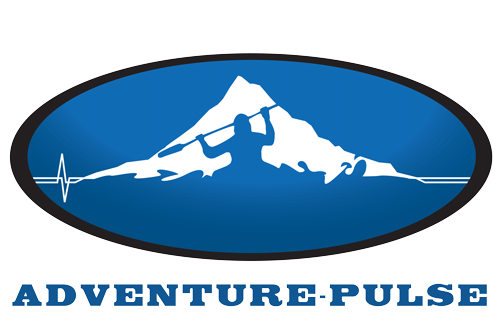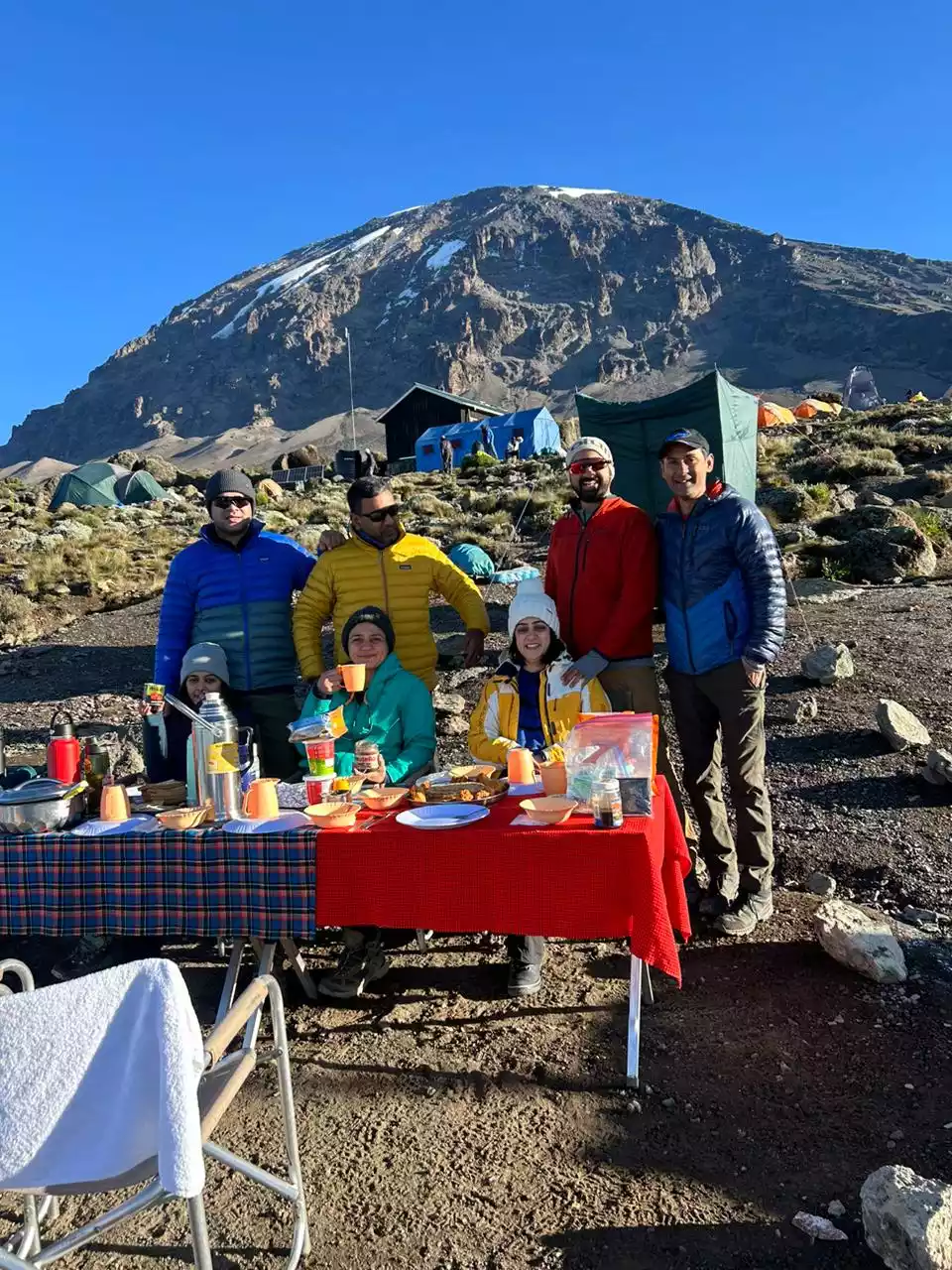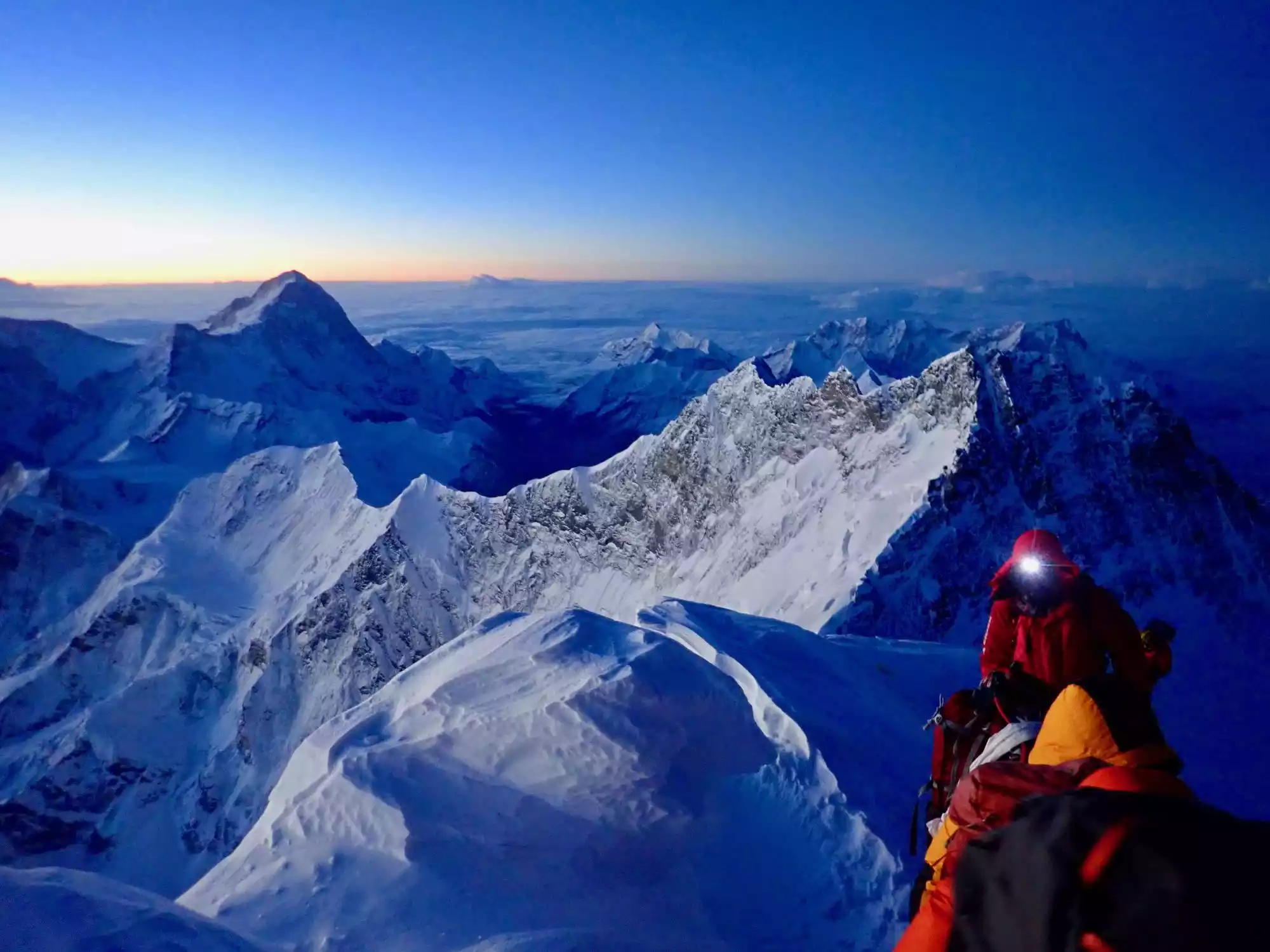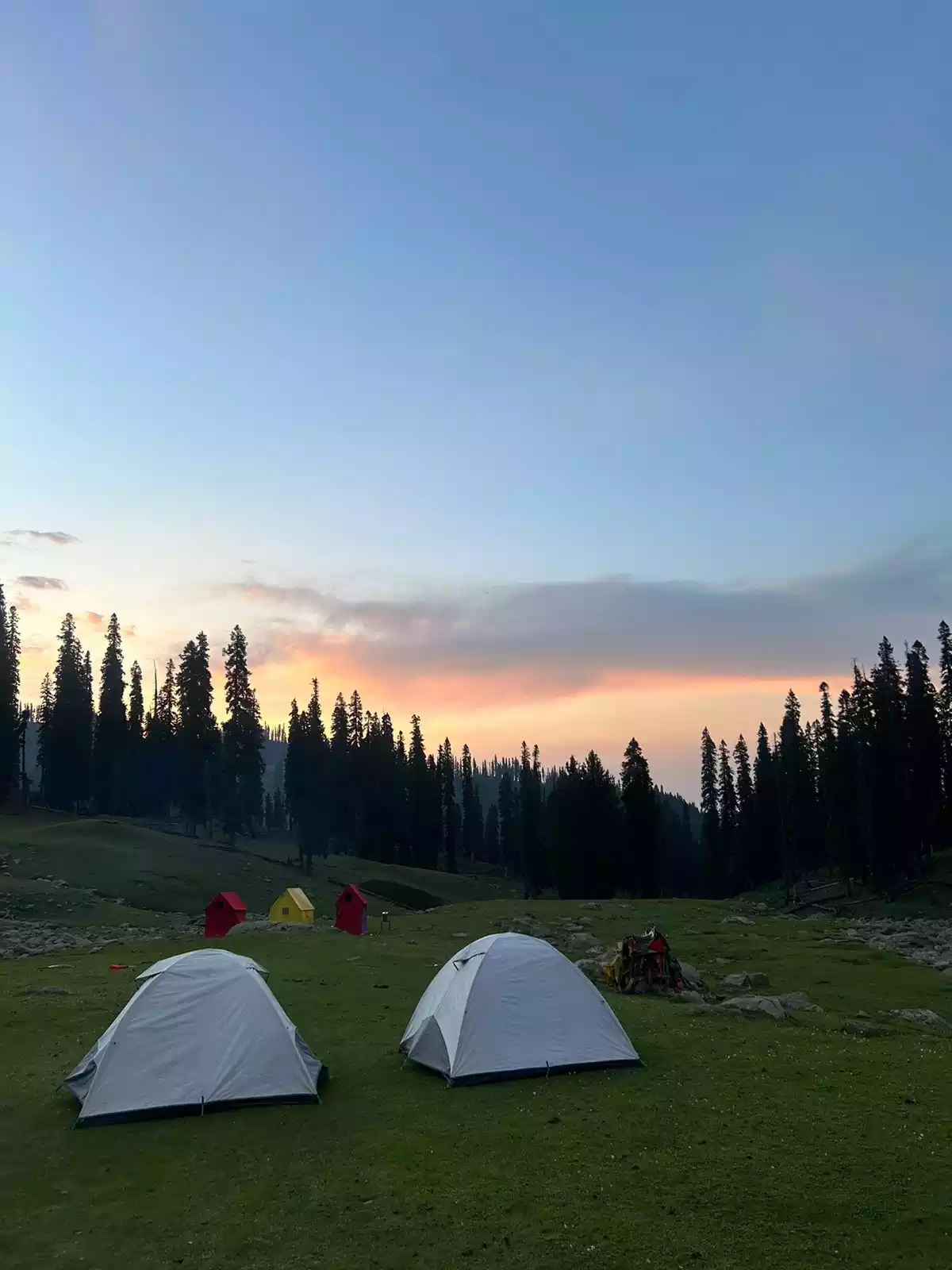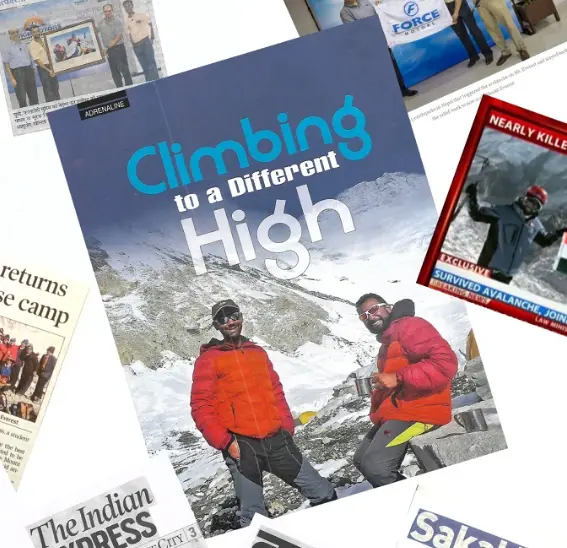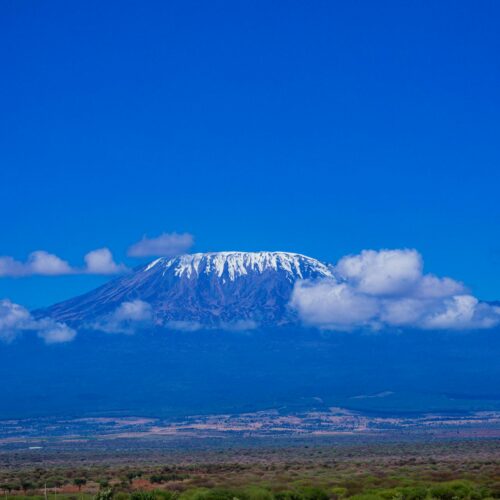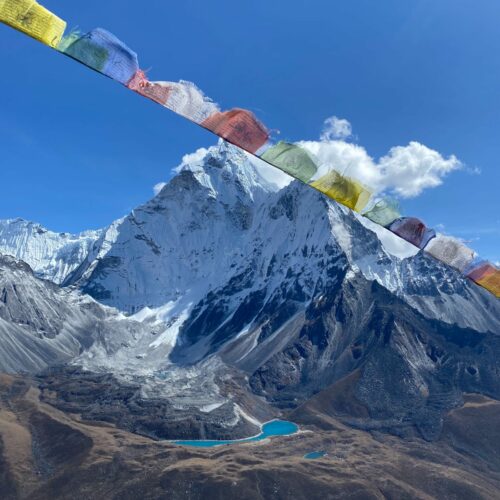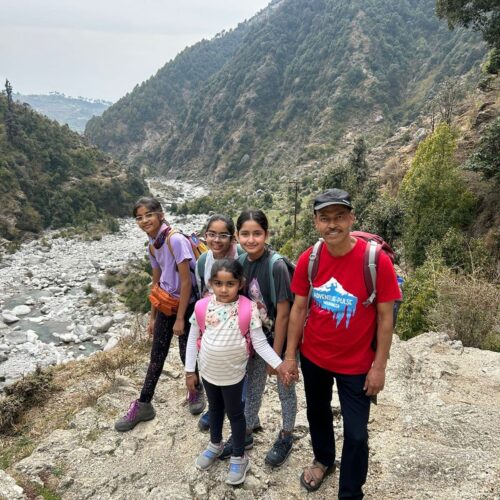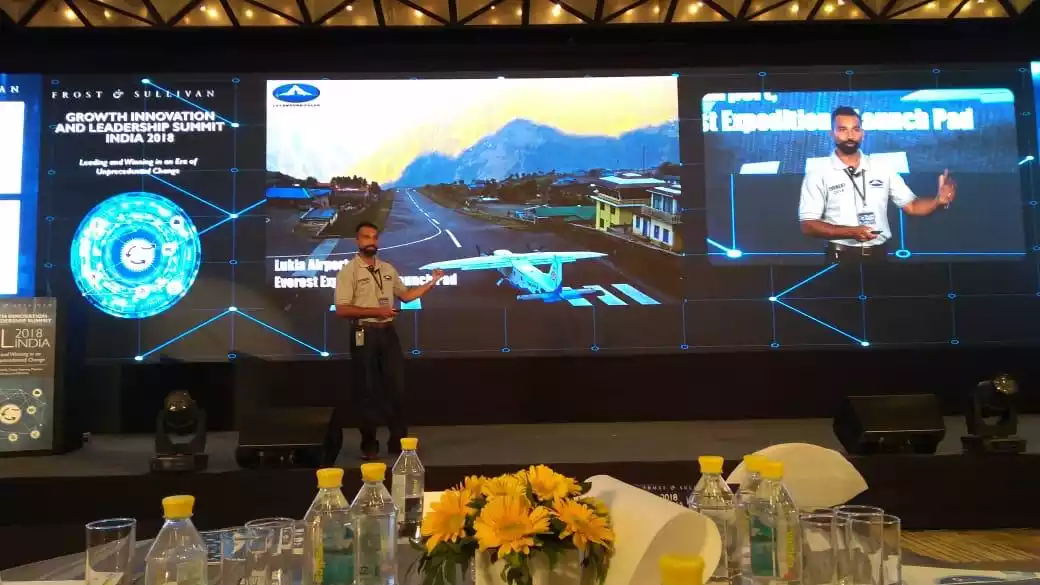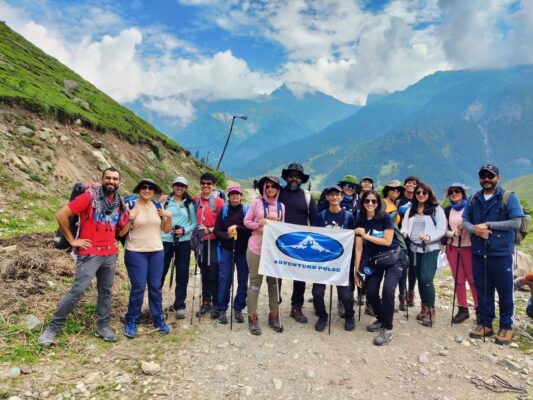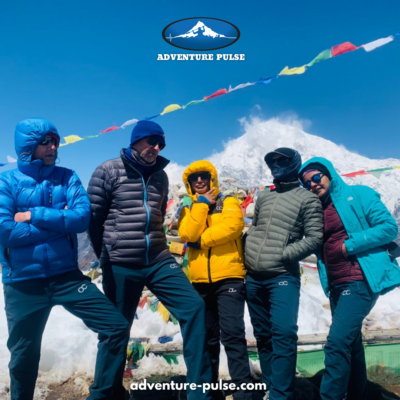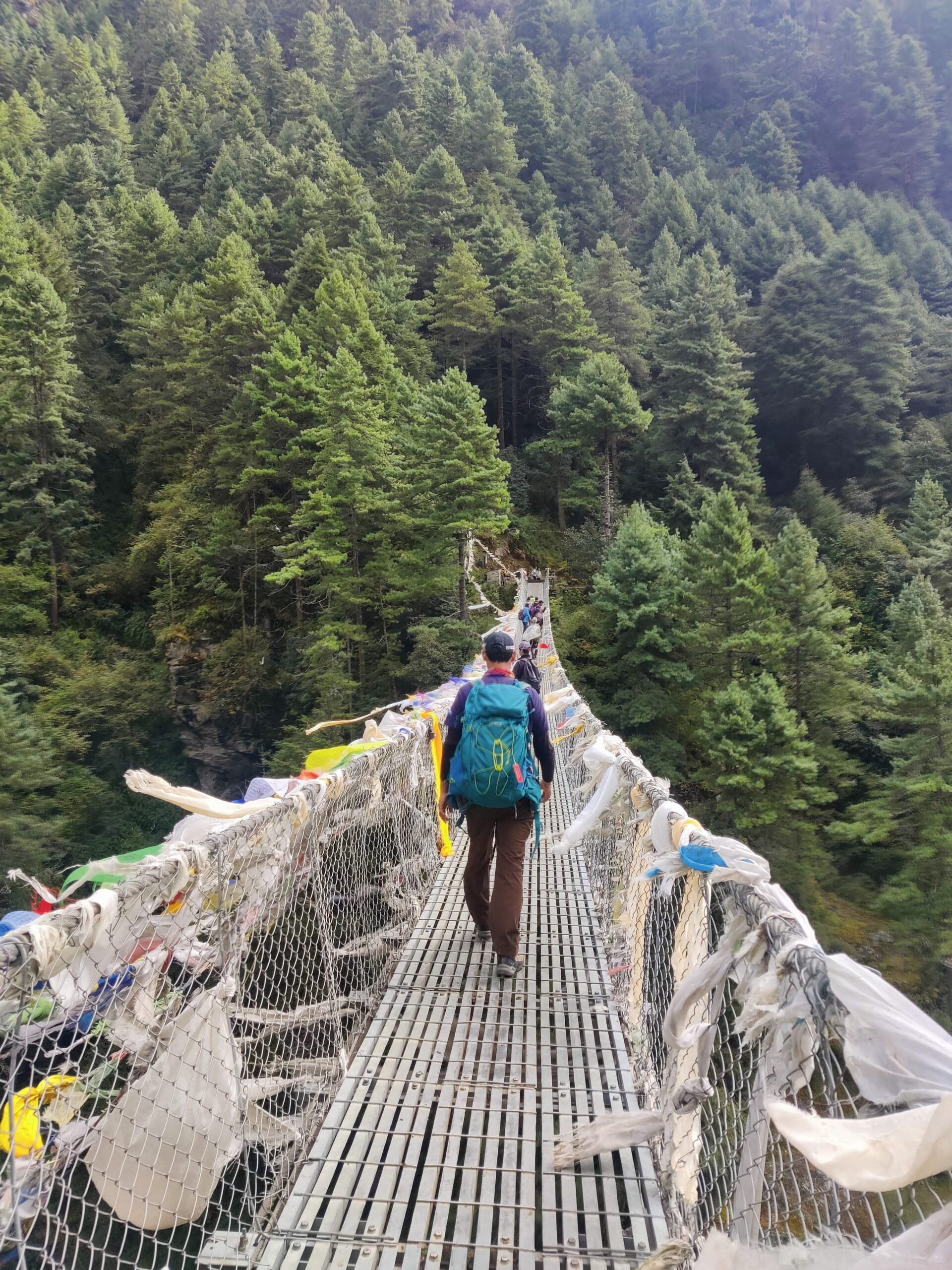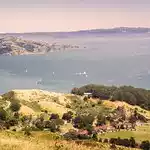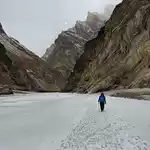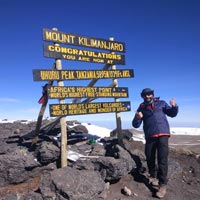Brief Itinerary
- Day 1 - Arrival in Bagdogra and drive to Pheuntsholing for an overnight stay.
- Day 2 - Drive from Phuentsholing to Paro; Visa formalities.
- Day 3 - Taktsang Monastery / Hike to Tigers Nest
- Day 4 - Trek to Janchulakha
- Day 5 - Trek to Jimilangtsho
- Day 6 - Trek to Labana
- Day 7 - Trek from Labana to Thimpu
- Day 8 - Drive to Punakha Valley
- Day 9 - Drive from Punakha to Phuentsholing & continue to Bagdogra
- Day 10 - Departure
Inclusions & Exclusions
Trip Cost Includes:
- Bhutan trekking permits.
- Airport pickup and drop. All ground transportation.
- On arrival visa proceesing fee for Indian Passport holders.
- Accommodation in Standard Hotels on Twin sharing basis (with breakfast)
- Accommodation in tents on twin sharing basis (with all meals during trek)
- Trekking equipment such as Personal Tents, Kitchen and Dining tent, Mattresses etc.
- Mules to carry luggage.
- Basic Medical Kit
- Support Staffs – Trekking Guide, Cook and assistants, Horseman.
Trip Cost DOES NOT Include:
- Flights in and out of Bhutan.
- Lunch and Dinner during Hotel stay.
- Hotel night in Bagdogra on return.
- Personal trekking gears, clothing items, trekking accessories.
- Monument entry fees
- Tips to staff
- Travel insurance
- Medical evacuation expenses
- Individual pickup/drop
- Single occupancy tent/hotel
Things to carry
Download as PDFExtreme temperature variations, high altitude, snow glare & proximity to sun are certain factors which necessitate the need to for proper mountaineering equipment. In order to enjoy your experience in the mountains, we have recommended that you carry the following with you.
Apparel
- Thermal Inners - At least 1 pair of Top and Leggings
- 6-8 t-shirts or long-sleeve shirt (cotton / dryfit)
- 2-3 pairs of trekking pants (no denim!)
- 1 Sweater/Sweatshirt
- 1 Fleece Jacket
- 1 Down Jacket
- 1 Waterproof Layer like raincoat or wind-cheater
- 1 pair of hiking boots
- 1 pair of comfortable sandals/floaters/sneakers
- 6-8 pairs of cotton socks (for day)
- 2 pairs of thick/woollen socks (for night)
- Gloves - liner and outer
- Sun hat
- Woollen cap
- Buff
Accessories
- Duffel bag / Rucksack (60L+)
- Daypack / Backpack (20-30L capacity)
- Sleeping bag (can be bought or rented in Kathmandu)
- 2x 1L Bottles (to carry drinking water)
- Lunchbox
- Torch + Batteries / Headlamp
- Knee/Ankle/Wrist Guards
- Trekking Poles
- Sunblock
- Sunglasses
- Moisturiser
- Hand Sanitiser
- Personal Medical Kit
- Personal Toiletries Kit
- Snacks!
Fitness
Download as PDF- There are three main aspects of training to focus on – strength training, cardiovascular training, and trekking + trekking alternatives.
- Strength training involves training different muscle groups, so that they can become stronger. There are different exercises for each muscle group, and working them all out 2x-3x a week should be enough to help you get comfortable trekking.
- Legs / lower body - exercises like squats, glute bridges, step ups and leg presses with help you develop stronger muscles in the lower body.
Core - Exercises like planks, bicycle crunches and leg raises can help with core stability; Pilates is also a core-intensive type of workout that will help.
Upper body - Bodyweight exercises like push-ups, pull-ups and dips will help develop these muscles. You can also use resistance bands or light weights to develop them further.
- It’s vital to do plenty of cardio training before your trek, so that you can get the most out of your experience
- Running - This is the most recommended form of cardio activity, as it activates a lot of the same muscles as trekking. Being able to run 10km in 60 minutes will allow you to get the most out of your trek.
Cycling / Swimming - If you have knee issues, or don’t enjoy running, you can also opt for cycling and swimming. Being able to cycling 30-50km or swim for 30-40 minutes, thrice a week, should be good to help you with treks like EBC.
HIIT training / Crossfit - Another option to level up your cardio training is to opt for high intensity aerobic exercises like HIIT or Crossfit, 2-3 times a week
The aim is to get your heart rate up, so you do not get winded on long days of trekking
- Hiking
Try to get outdoors and go for a hike on the weekends! Uphill trails of 4-8 kilometres are will help you get used to trekking. Make it a point to carry a loaded backpack, and walk in your trekking shoes.
- Hiking Alternatives
Climbing stairs, and using the treadmill or stairmaster on an incline, will help prepare you for treks. Make it a point to carry a loaded backpack so that you can get used to the extra weight; and use your trekking boots, so that you can break them in and walk comfortably.
- If you’re confused with all this information, no need to worry! The most important thing with training is consistency, and staying injury-free. Your training week should ideally have
Strength training - 3 sessions
Cardio training - 3 sessions
Hiking - 1 long session, best on the weekends
Rest and stretching - at least 1 day
FAQs
Druk Path Trek
1) What are the staying arrangements for this trek?
During the Druk Path Trek, accommodation is primarily in campsites set up by our experienced staff. These campsites are located in scenic and serene locations, often near high-altitude lakes or mountain ridges. The tents are spacious and comfortable, providing a cozy space to rest at the end of each trekking day. These tents have a comfortable mattress and a sleeping bag inside to keep you warm. We also arrange for porters to carry your gear and set up the camp for you, ensuring that your focus remains on enjoying the trek.
In towns like Paro and Thimphu, where the trek begins and ends, you will stay in basic but comfortable guesthouses or lodges that offer a glimpse of Bhutanese culture and hospitality.
2) What kind of physical shape do I need to be in to trek here?
The Druk Path Trek is considered a moderate trek, so a basic level of fitness is recommended. You should be comfortable walking for 5-6 hours a day on varied terrain, which includes gradual ascents and descents. While the trek does not involve any technical climbing, good physical conditioning, including cardiovascular and endurance training, will help you cope with the altitude and rugged terrain. If you are a beginner, it’s advised to prepare with regular hikes and cardio exercises in the months leading up to the trek.
3) What are the entry and exit points for this trek?
The trek starts in Paro, a picturesque town in Bhutan, and ends in Thimphu, the capital city. Both Paro and Thimphu are easily accessible by road from the Indian border. After completing the trek, you can explore the cultural sites in Thimphu and then return to Paro for your departure. The international Paro Airport is the main gateway for flights into Bhutan, making these towns the primary entry and exit points for the trek.
4) What is the communication system available along the way?
Throughout the trek, communication may be limited due to the remote locations of the campsites. However, local SIM cards generally work in most parts of the trek, though coverage may be sporadic in higher altitudes. Rest assured, you will be in good hands with our experienced team throughout the trek.
5) What about high-altitude acclimatization?
Acclimatization is an important aspect of trekking at higher altitudes. The Druk Path Trek reaches a maximum altitude of 4,210 meters at the Labana Pass, so it’s crucial to give your body time to adjust. The trek is designed with gradual altitude gains, allowing for proper acclimatization at each campsite. We follow a slow and steady approach to minimize the risk of altitude sickness. Our experienced guides will monitor your progress and ensure that necessary precautions are taken.
6) What are the food arrangements?
During the Druk Path Trek, we provide nutritious and wholesome meals prepared by our trekking crew. The food is typically a blend of Indian & local Bhutanese cuisine. Our cooks are very experienced and will be happy to entertain any particular requests you may have for your meals. All the meals are served in the common dinning tent.
7) Will I be able to take a shower or bath during the course of the trek?
While there are no facilities for showers or baths at the campsites, you will have access to basic sanitation facilities. Most trekkers find that wet wipes or hand sanitizers are a practical alternative for staying fresh during the trek. After completing the trek, when you return to Thimphu or Paro, you will have access to shower facilities in the guesthouses where you stay.
8) What are the emergency medical precautions available during the trek?
Our guides are trained in first aid and basic emergency medical procedures. We carry a well-equipped first aid kit on the trek, and our team is experienced in handling common trekking injuries and altitude-related concerns. In case of a medical emergency, our guide will go to the nearest network point within the next few hours and contact emergency services. For more serious cases, the trek leaders will ensure timely evacuation to the nearest medical facility.
9) What happens in case of bad weather during the trek?
Adventure Pulse usually plans all it treks during the most favorable season on the mountain, but having said that, weather is always an unpredictable factor. We usually look at weather reports before leaving for the Druk Path Trek. In case the weather is unfavorable, we could delay it to the next day depending upon the Itinerary. A buffer day/s is always built in the itinerary as contingency if we get hit by unfavorable weather conditions. In the worse situation, we may have to turn back midway, but safety is always a priority which cannot be compromised on.
10) What is the Druk Path Trek distance?
The total distance covered during the Druk Path Trek is approximately 60 kilometers (37 miles). The trek spans 5 days and includes a mix of moderate ascents, descents, and ridge walks. The daily trekking distance varies but generally ranges from 10 to 15 kilometers per day. Despite the manageable distance, the trek offers plenty of challenges with its altitude, terrain, and natural beauty.
